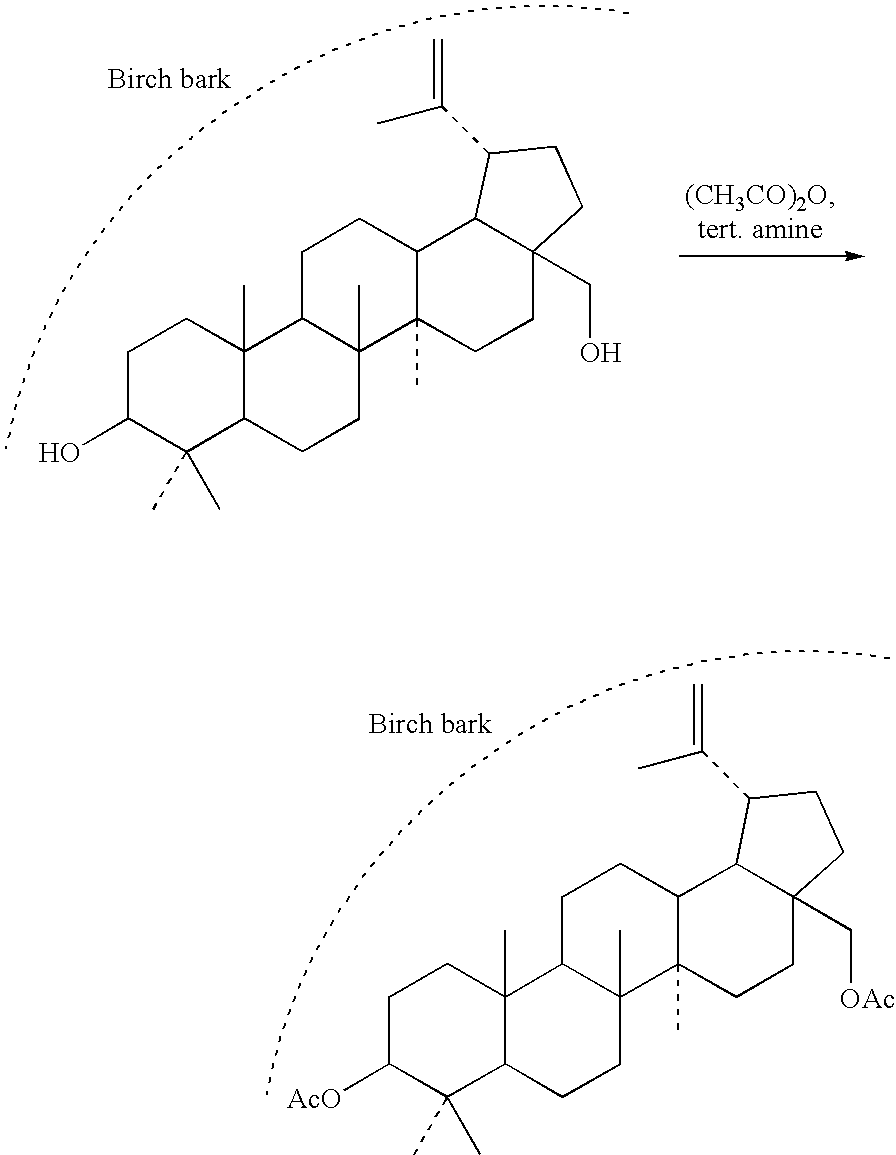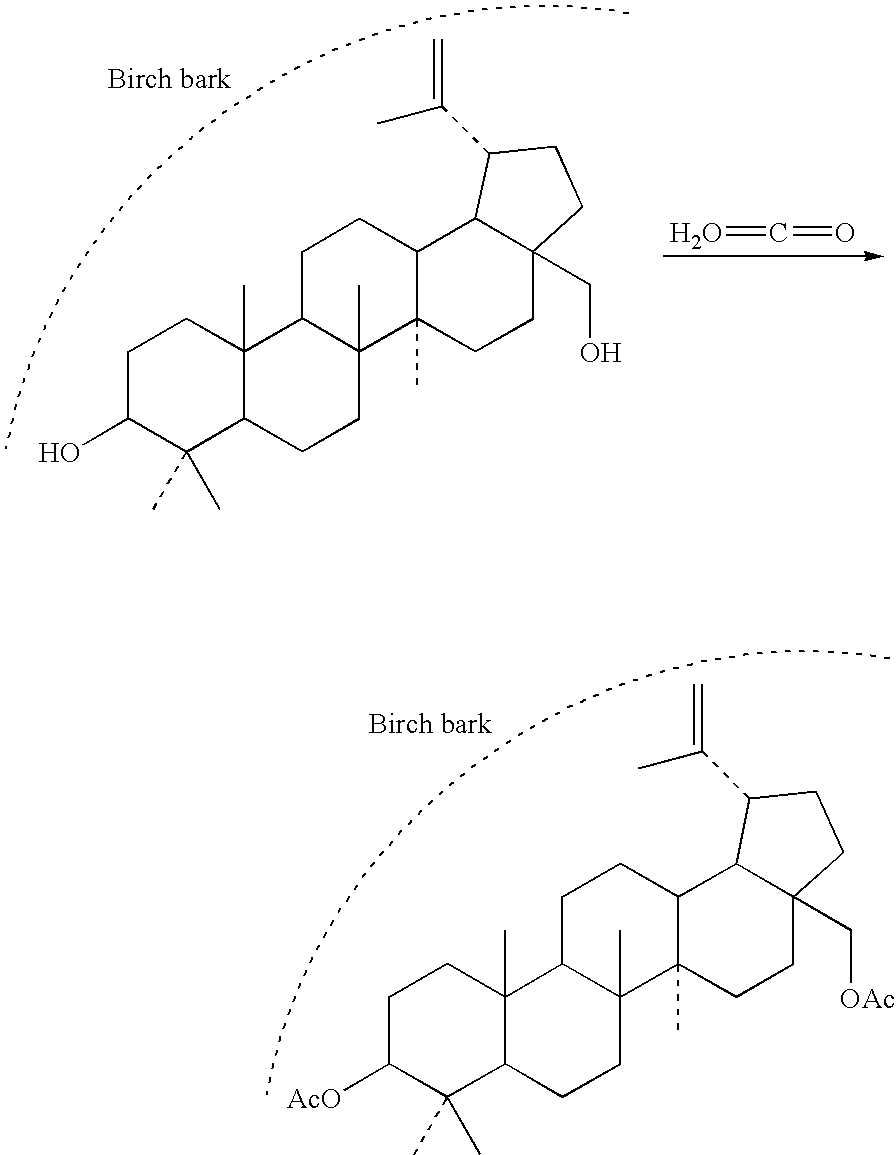Method of preparation and isolation of betulin diacetate from birch bark from paper mills and its optional processing to betulin
- Summary
- Abstract
- Description
- Claims
- Application Information
AI Technical Summary
Benefits of technology
Problems solved by technology
Method used
Image
Examples
example 1
Birch Bark Refining
[0024]Into a cylindrical pot, equipped with shaft stirrer and blow valve, 200 l of water of the temperature of 40-50° C. were poured, 40 ml-100 ml of cationactive or anionactive tenside were added. Then, the stirring was started and 40 kg of ground birch bark (particle size 6-8 mm) were slowly added, by a speed corresponding to the speed of dipping of the bark. After adding the whole amount of the birch bark, the stirring was continued for further 10 min and after that the stirrer was stopped. After 15 min, the bark fraction floating on the surface was collected, separated and the liquid was let to drain away. The refined bark was dried at 50-60° C. in a hot-air oven. 10.9 kg (27.9%) of the refined bark was obtained, containing 21-24% w / w betulin according to HPLC of its ethanolic extract.
example 2
Chemical Modification of the Birch Bark by Acetic Anhydride
[0025]Into a cylindrical pot with blow valve, equipped with a sealable lid, 20 kg of the refined birch bark obtained by the method of example 1 were put in and 55 l of acetic anhydride containing 0.1-1.0% v / v pyridine were poured so that all bark is dipped under the surface. The content of the pot was then stirred with a stirrer and then the pot was sealed. The acetylation reaction took 5 days, whereas during the first three days, the content of the reaction vessel is spontaneously heated to 30-35° C. After this period, all the liquid was drained out of the vessel by the blow valve and 60 l of water of the temperature of 40-50° C. was added into the pot, the mixture was thoroughly stirred with the stirrer and the vessel was again sealed with the lid. After additional 5 days, the liquid was drained out and the bark was washed with 50 l of cold water and subsequently dried in hot-air oven at the temperature of 60-80° C. 19.3 k...
example 3
Chemical Modification of the Birch Bark by Ketene
[0026]Into a duplicated glass reactor with fused sintered glass equipped with gas medium inlet in the bottom and waste gas outlet in the upper part, 400 g of refined dry birch bark of Example 1 was put and then the content of the vessel was heated by steam heating to the temperature of 50° C. Then, stream of ketene was fed into the vessel for 30 min, the ketene being generated from acetone by ketene lamp (Williams J. W., Hurd Ch. D.: J. Org. Chem. 1940, 5, 122-125). After finishing the ketene feeding, water steam was fed into the reactor for the period of 10 min. Subsequently, the reactor was taken apart and the acetylated bark was washed with water on a filter and dried in a hot-air oven at the temperature of 60-80° C. 411 g of acetylated birch bark was obtained, which contains 19-22% w / w of betulin diacetate according to HPLC analysis of a supercritical extract.
PUM
 Login to View More
Login to View More Abstract
Description
Claims
Application Information
 Login to View More
Login to View More - R&D
- Intellectual Property
- Life Sciences
- Materials
- Tech Scout
- Unparalleled Data Quality
- Higher Quality Content
- 60% Fewer Hallucinations
Browse by: Latest US Patents, China's latest patents, Technical Efficacy Thesaurus, Application Domain, Technology Topic, Popular Technical Reports.
© 2025 PatSnap. All rights reserved.Legal|Privacy policy|Modern Slavery Act Transparency Statement|Sitemap|About US| Contact US: help@patsnap.com



